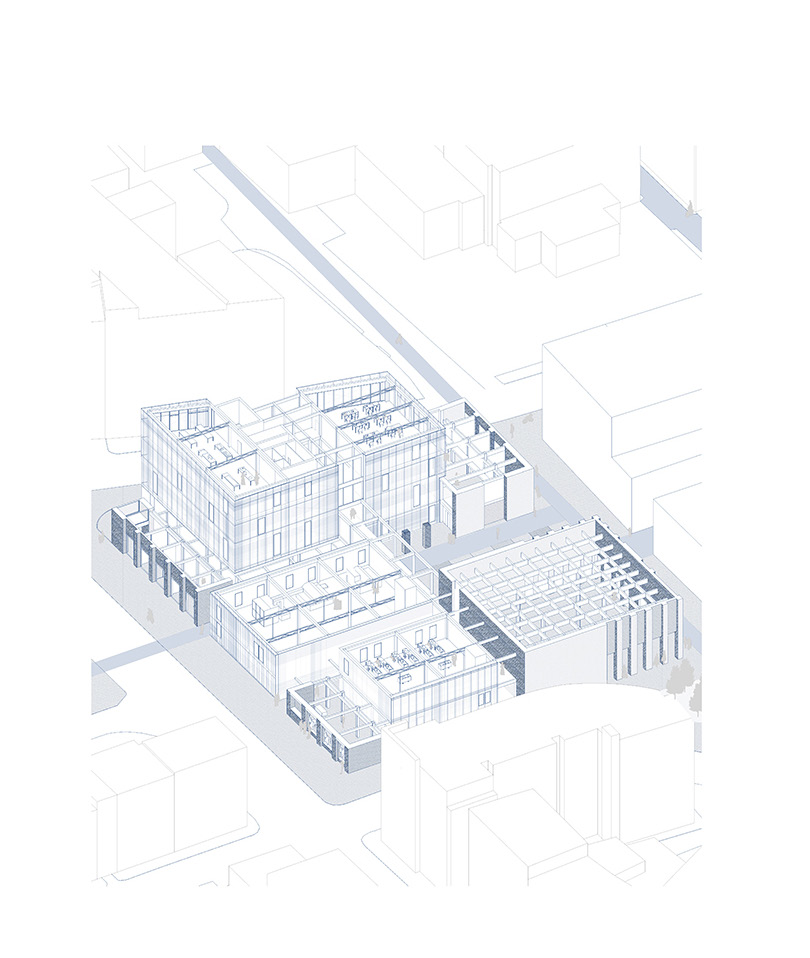Glasgow is a city with spatial experiences that are unique. Many of the densely populated urban blocks of Glasgow’s past still dominate the city’s urban fabric. The narrow lanes present take you to sheltered, concentrated glaswegian spaces of the city. Together with the contrasting open and spacious shopping streets of the golden Z, the Architecture creates these layers of spatial diversi- ty which define Glasgow. Using these architectural tools of both compression and decompression, within my thesis I aim to create spaces seamlessly with the city’s urban fabric.
Within the city there are disconnected islands of production, consumption and waste . This zoning creates disjointed spatial consequences for the areas in between. Through creating space for both private and public programmes these patches of vacant and derelict lands can be reactivated.
Through architecture, I will provide a symbiotic experience with the city centre, creating a homo- geneous feel.
The design proposal notes and emphasises the current street and routes of the city. By creating a hierarchy of the networks through the site, King Street and St Enoch Car parks, the public route is determined to create a master plan. These routes aim to reconnect the city through celebrating the spaces inbetween through a mix of program and familiar architectural experience.
To respond to both the city and the program, two architectural languages are tested within the design proposal. The public program mimics the city’s fabric through the expression of heavi- ness and craft. Through emphasising the appearance of heaviness through mass and depth of the facade, the building creates interaction and space for shelter. It also demonstrates grandeur through the perception of careful material selection. Therefore within this thesis I test how I can create space that matches Glasgow ethically. The private program manipulates the materials and form of a factory and our perception of what it is changes through the design and translucency of the facade. This light architecture captures joy of both the user and the exterior surroundings through the interplay of light and its shadows.
By creating a permeability for both architectural languages, the building becomes part of both the public and private spaces. The interplay of both languages demonstrates a new way of producing space for making and buying for each other and the future.

